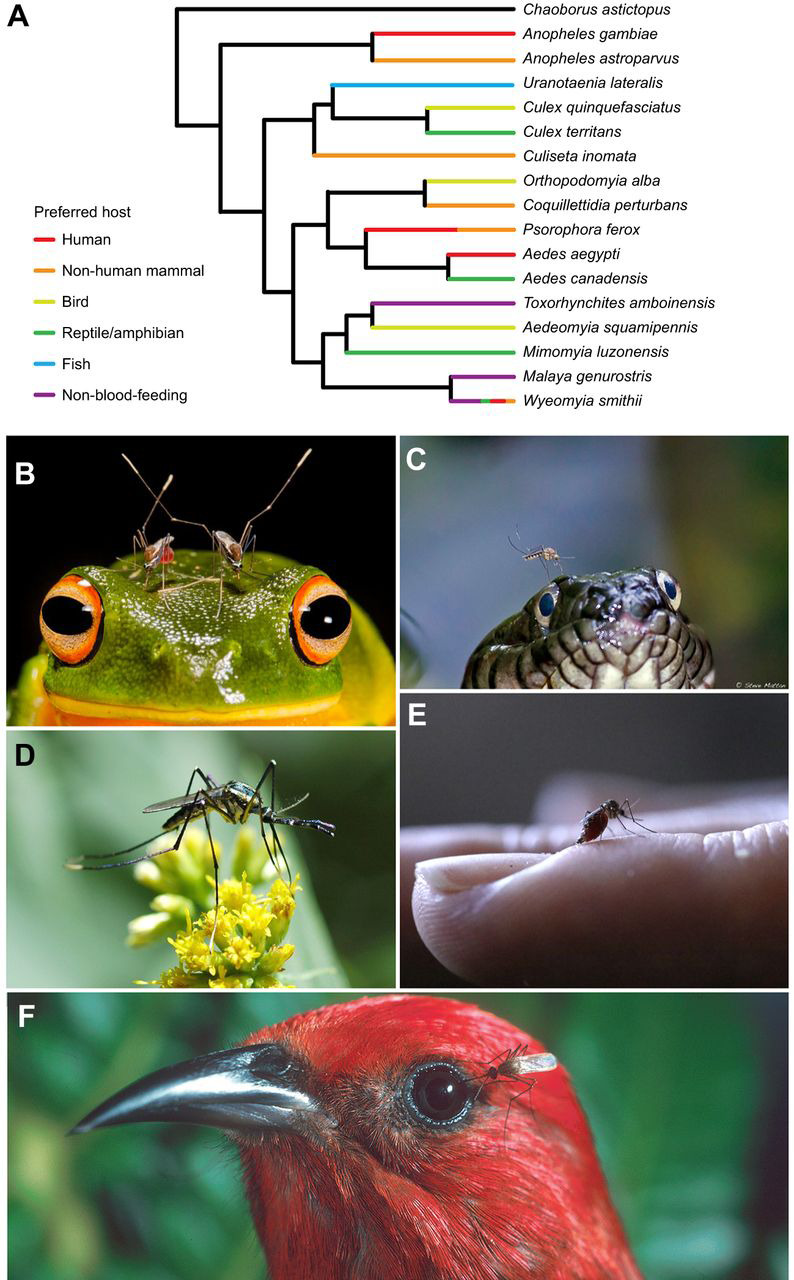Fig. 1.

Various host preferences have evolved multiple times in different mosquito lineages. (A) Phylogenetic relationships of selected mosquito species, with midges (Chaoborus astictopus) shown as an outgroup, adapted from Reidenbach et al. (2009). Taxa are color coded by dominant host preference (Braima et al., 2017; Burkett-Cadena and Blosser, 2017; Clements, 1999; Danabalan et al., 2014; Edman et al., 1972; Gillies, 1964; Molaei et al., 2008; Steffan and Evenhuis, 1981; Tempelis, 1975). Within a genus, host preference may vary across species. The pitcher-plant mosquito Wyeomyia smithii is an obligate non-blood-feeder in the northern part of its range, whereas individuals living in the southern part of this species' range may blood feed after the first oviposition (Lounibous et al., 1982; Bradshaw and Holzapfel, 1983). (B–F) Examples of the diversity of hosts preferred by different mosquito species, including frogs (B), snakes (C), flowers/non-blood-feeding (D), humans and other mammals (E) and birds (F). Photo credits: (B) Matthew McIntosh, (C) Steve Mattan, (D) Pennsylvania Department of Natural Resources, (E) J.A.R., (F) Jack Jeffrey.
